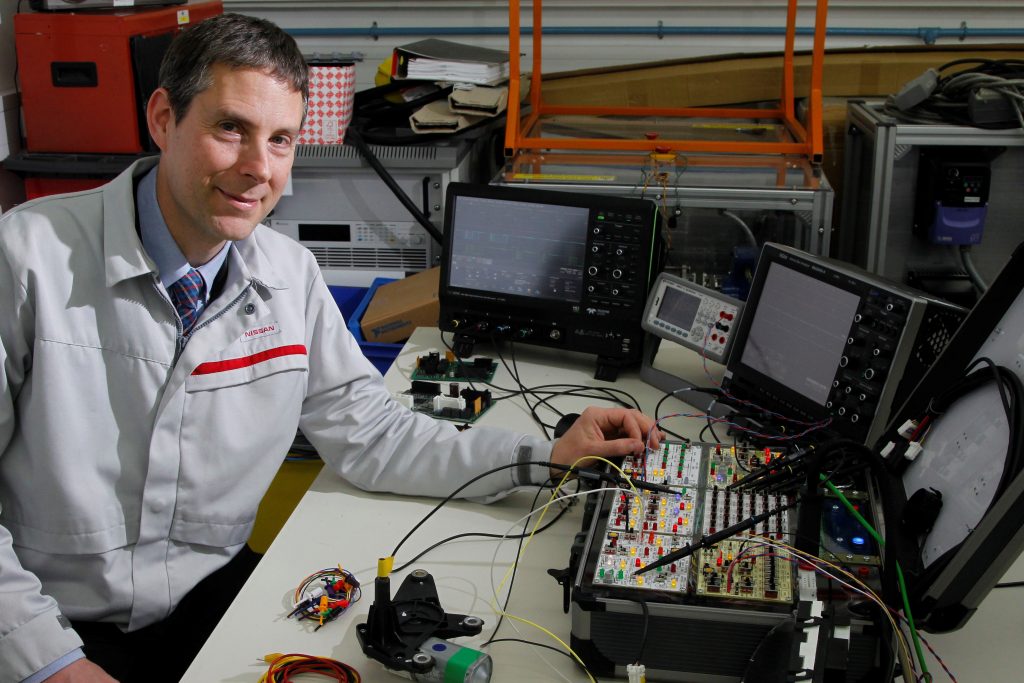A NISSAN engineer has developed a new way to share advanced technologies with colleagues abroad.
He imagined an innovative ‘mobile technical centre’, built it at home in his spare time and then fitted into an easy-to-carry briefcase.
The idea was the brainchild of Martin Banks, and it is now being used to develop the next generation of Nissan’s award-winning crossovers – the Qashqai, Juke and X-Trail.
To the untrained eye the briefcase looks lo-tech, with its simple switches and LED lights.
But this box of tricks – small enough to be transported as aeroplane cabin luggage – can replicate the entire electrical architecture of up to 200 different Nissan model and trim combinations. Martin’s biggest problem now is getting past the security scanners at airports!
“I travel to many meetings with colleagues around the world, where we share ideas and solutions,” explained Martin, an electrical engineer from Nissan’s European Technical Centre in Cranfield, UK.
“The issue is always demonstrating the systems we have developed when I’m away from my desk, so I decided to create my own solution.”
Martin did most of the design and development of his briefcase at home and in his spare time, even making his own printed circuit boards so they performed exactly as he wanted.
He added: “It looks very rudimentary, but the LEDs show me if the circuits are working properly. This simple framework can test the in-car integration of some of Nissan’s most advanced electrical features, such as the driver assistance and Safety Shield technologies.”
The briefcase helps to prove that electrical systems and software for next-generation Nissan crossovers – such as the Qashqai, Juke and X-Trail – will work in harmony with the rest of the car and provide the functionality that today’s drivers require.
Following ‘table-top’ validation using Martin’s briefcase, the set-up is built as a larger-scale prototype and rigorously tested to ensure a high-quality customer experience. Only then is it approved for inclusion in a future model.





